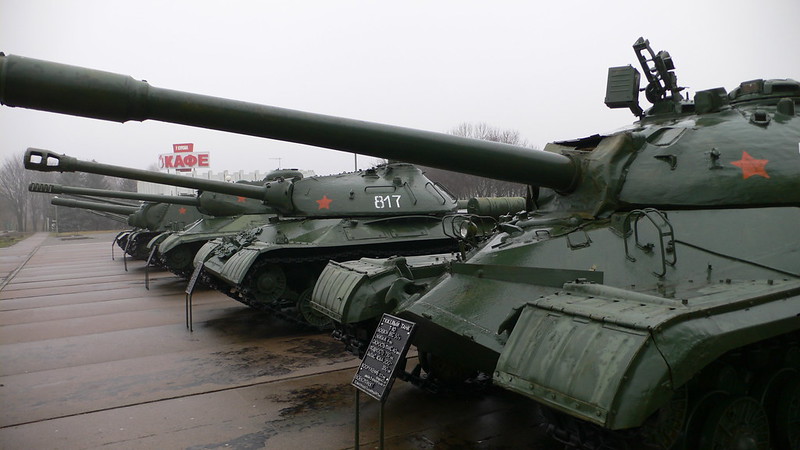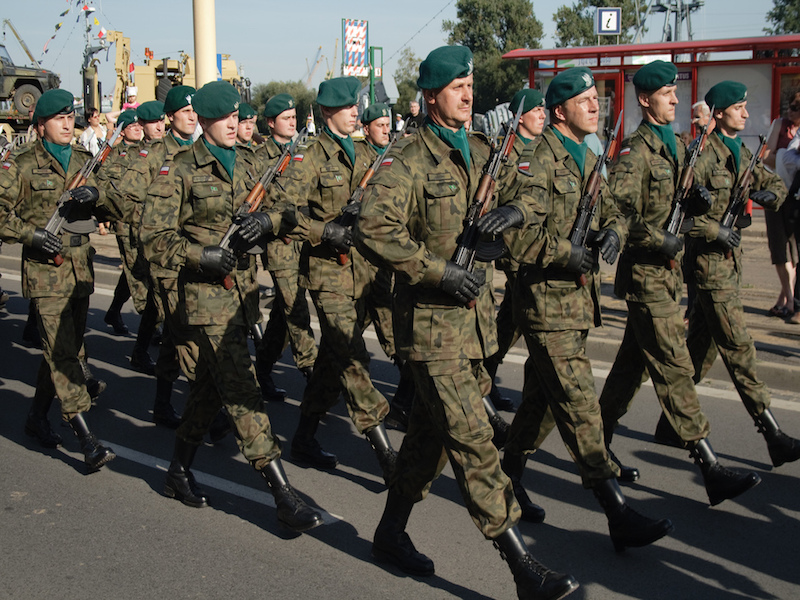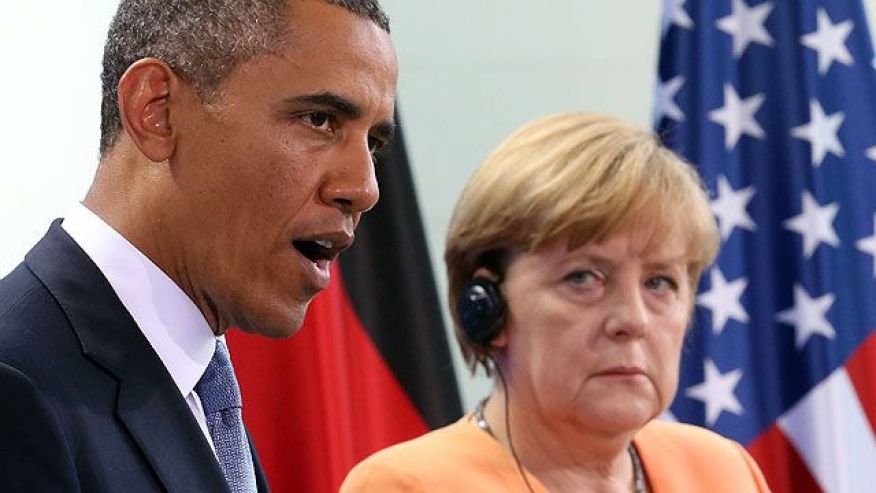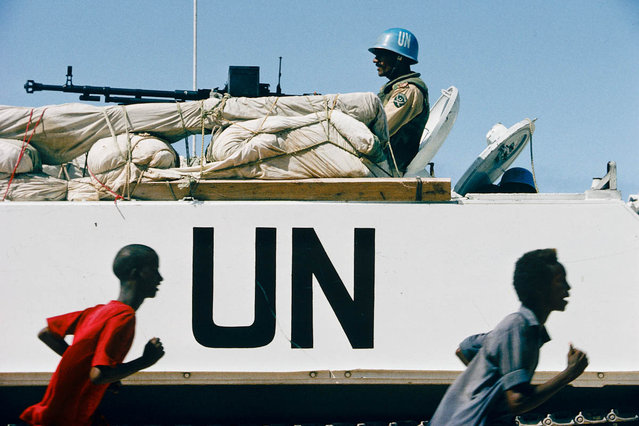Often praised as the father of the ‘techno-thriller,’ Tom Clancy used rigorous attention to detail, combined with meticulous research into political and military affairs, to produce a series of best-selling books in the 1980s and 1990s. One of these, a collaboration with author Larry Bond, was Red Storm Rising (1986), which centred on a hypothetical war between NATO and the Warsaw Pact (WP). In the novel, an impending loss of oil production after a terrorist attack on the USSR’s main oil field at Nizhnevartovsk prompts the USSR to launch a war against Western Europe. Clancy incorporates many different characters on both sides of the conflict to illustrate the horrors, and humanity, that warfare brings, while attempting to maintain a realistic balance between the two sides. Ultimately, the war ends badly for the Soviets, and a coup removes the Politburo before tactical nuclear weapons can be used to reverse the defeat.
Although almost forty years old now, the novel’s themes driving both the Soviet decision to engage NATO, and their resulting loss, remain relevant in the wake of the Russian invasion of Ukraine. In the novel, the Soviets invade Europe because their appraisal of NATO’s strength is founded on misinformation and mistaken assumptions. When it became clear that the USSR would not win, the fictional head of the KGB decried the decision to start the conflict as a result of ‘[b]ad luck and poor judgment…Add some fear in the hearts of our Party hierarchy, some ambition in one of my subordinates, the Defense Minister’s sense of importance, and outright stupidity on the part of the West, and here we are today’ (P. 537). Such themes are remarkably similar to Russia’s early estimates regarding their chances of success in Ukraine.
Given the recent events surrounding Russia’s invasion of Ukraine, it is interesting to note that the reality of warfare in 2022 Europe does not differ in many significant ways from that of Clancy’s 1986 version. In the novel, the Soviet forces look impressive on paper (and indeed, we may include the Eastern bloc here, as they were part of the Warsaw Pact), but which suffered operationally from corrupt commanders, limited replacements, and tenuous logistics. While the fictitious Red Army performed better than their real-life Russian counterparts in Ukraine, their only significant breakthroughs in the novel come as a result of Russian General Alekseyev bypassing or ignoring the Soviet system and assuming personal command of local units, as NATO forces retain loose control of both sea- and airspace in most theatres. In Ukraine, such systemic problems resulted instead in demotivated, poorly trained, and ill-paid conscripts who were reluctant to fight.
Indeed, one of the most salient points of the novel is that NATO’s success derives from two factors: its reliance on digital technology (smart munitions, stealth aircraft, integrated command-and-control networks), and on retaining air superiority over the conflict zone to support troops on the ground. For modern-day Ukraine, similar factors are influencing Ukrainian successes: reliance on technologically sophisticated weaponry (Javelin anti-tank missiles, HIMARS rocket launchers), and command-and-control networks (Starlink satellite-based internet, for instance). Conversely, Russian military equipment has been found to be lacking similar levels of development, relying heavily on massed numbers and numerical advantages in local areas to overwhelm sections of smaller resistance. Neither Russia nor Ukraine have achieved air superiority, which would significantly improve their battlefield positions, and Russia’s offensive remains stalled in many areas without significant air support to create an opening in Ukrainian lines.
Similarly, Russian operational tactics and doctrine do not appear to have changed very much. In the novel, the Warsaw Pact offensive is unable to exploit tactical opportunities due to the rigidity of their command structure: even local decisions must be passed up the chain of command to be approved (both militarily and politically) before being implemented. This costs the Soviets several key objectives in Western Germany. In reality, the top-down command style of the Russian military, and the limited tactical initiative on the part of Russian units and commanders has served to hamper their offensive almost from the very beginning of the invasion. Indeed, several news outlets reported that Vladimir Putin had since assumed personal control of the war’s operations, further limiting local initiative by field commanders.
Other areas of the book have not aged as well or remained as relevant. For instance, the Russian military is no longer restrained by competing power blocs in Moscow; there may be no individual (or group) capable of resisting Putin should he decide to use a nuclear weapon in Ukraine. In the same vein, the novel does not address the actions of partisans and non-uniformed resistance, which, as events in Ukraine have shown, often have a useful effect in providing intelligence, sabotage, or other activities which fall outside of traditional military roles.
Ultimately, however, the inescapable conclusion from the novel is that conflicts are fought and won by logistics: despite being numerically inferior to the Warsaw Part, NATO’s greater ability to funnel ammunition, food, reserves, and fuel to the front lines keeps its units in the field for longer, and returns them to service more quickly than their Soviet counterparts. This lesson appears to have been lost in 2022: Russian forces have suffered extensively from a lack of reliable (or extant) logistics support. Stories about Russian soldiers looting civilian homes for food, fuel, and parts are common, as are a lack of resupply from Russia itself. Given the pace of combat operations, resupply and replacement are two of the foundational necessities for a successful campaign. And as Clancy and Bond illustrated then, and Ukraine demonstrates now, control of these can be enough to snatch victory from the jaws of defeat.
All novel references come from T. Clancy, Red Storm Rising (New York: Berkley Books, 1987).
Photo: ‘Russian Tanks’ by Metal Chris, 8 December 2007 via Creative Commons. Licensed under CC BY 2.0.
Disclaimer: Any views or opinions expressed in articles are solely those of the authors and do not necessarily represent the views of the NATO Association of Canada.




